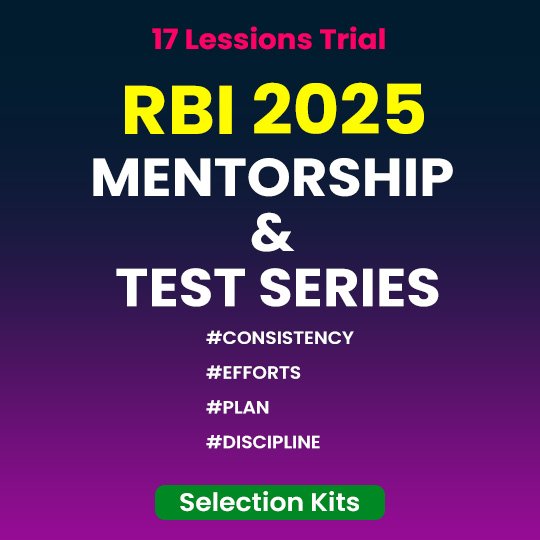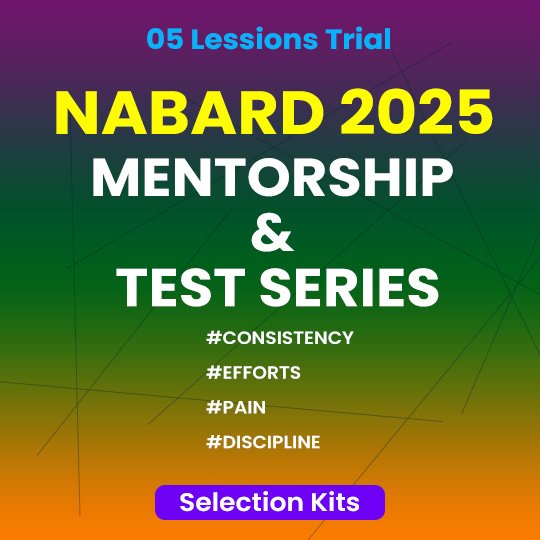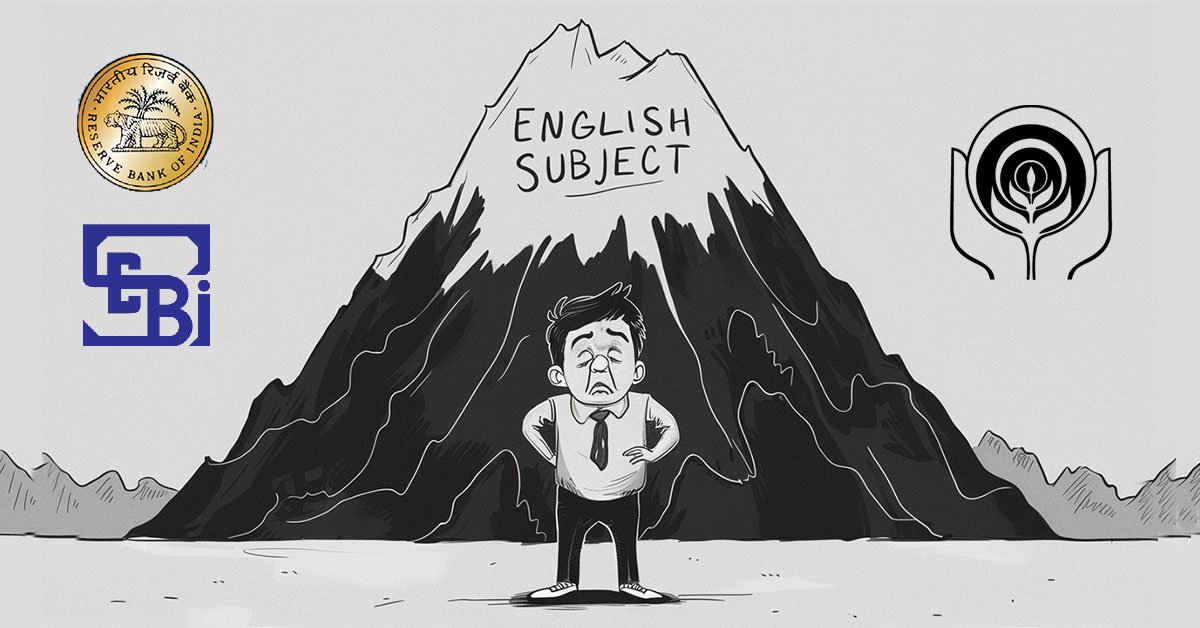Daily Current Affairs Quiz
21 November, 2025
National Affairs
1. Assent of the President (for central bills) or the Governor (for state bills)
Source: Times of India
Context:
A five-judge bench led by CJI B.R. Gavai clarified that Article 142 of the Constitution cannot be used to grant ‘deemed assent’ to Bills pending with governors or the President. The bench overruled a previous two-judge bench decision in Tamil Nadu, which had attempted to impose timelines for assent and enforce judicial oversight.
Article 142
“The Supreme Court in the exercise of its jurisdiction may pass such decree or make such order as is necessary for doing complete justice in any cause or matter pending before it, and any decree so passed or order so made shall be enforceable throughout the territory of India.”
Key Features
- Complete Justice:
- Article 142 empowers the Supreme Court (SC) to issue any decree or order necessary to do “complete justice” in a case.
- Binding Across India:
- Orders passed under Article 142 are enforceable throughout India.
- Unlimited Jurisdiction:
- SC can pass orders beyond statutory provisions to ensure justice, but it cannot contravene the Constitution itself.
- Not Absolute:
- Cannot be used to usurp powers of other constitutional authorities (e.g., President, governors).
- Cannot create concepts like “deemed assent” for bills pending with governors or the President (SC ruling, 2025).
- Examples of Use:
- Ensuring compliance with court orders
- Environmental cases (e.g., Ganga and Yamuna cleanup directives)
- Enforcement of fundamental rights
Consent of a Bill (Presidential Assent)
Once a Bill is passed by both Houses of Parliament (or just the State Legislature for state bills), it must receive the assent of the President (for central bills) or the Governor (for state bills) before it becomes law. This is called “assent”.
President’s Powers on a Bill (Article 111)
The President has four options when a Bill is presented:
- Give Assent → Bill becomes law.
- Withhold Assent (Veto) → Bill is rejected.
- Return for reconsideration → Only applicable for ordinary Bills (not Money Bills). The President can suggest changes, and Parliament may reconsider.
- Constitutional/Reserved Bills → For certain types like Bills affecting state powers, the President may reserve the Bill for consideration, delaying assent until further review.
Governor’s Role on State Bills (Article 200)
When a Bill is passed by a State Legislature, the Governor has several options before it becomes law:
- Give Assent → The Bill becomes law.
- Withhold Assent → The Bill is rejected and does not become law.
- Return the Bill for Reconsideration → Only applicable for ordinary Bills (not Money Bills). The Governor can suggest changes, and the Legislature may reconsider it.
- Reserve the Bill for the President’s Consideration → Certain Bills, like those affecting the powers of High Court, judiciary, or other states, must be sent to the President. The Governor cannot give assent on their own.
Key Points
- For Money Bills, the President cannot return the Bill; only assent is possible.
- Article 111 governs the President’s role.
- For State Bills, the Governor exercises similar powers under Article 200, with the option to reserve the Bill for the President’s consideration.
- Judicial review is limited: Courts cannot interfere in the President’s or Governor’s decision on assent (as clarified in the recent SC judgment on Article 142).
2. Hamara Shauchalaya, Hamara Bhavishya Campaign
Source: PIB
Launched by: Ministry of Jal Shakti on World Toilet Day 2025
Objective: A national initiative to upgrade and sustain rural sanitation facilities, promote maintenance, and encourage community responsibility in Gram Panchayats.
Key Features
- Toilet Functionality & Repairs:
- Restoration of Community Sanitary Complexes (CSCs) and Individual Household Latrines (IHHLs)
- Emphasis on operations & maintenance (O&M) improvements
- Aesthetic Upgradation:
- Painting, cleaning, and beautification of rural toilets
- Aims to sustain usage and dignity
- Awareness & Education:
- School-based sanitation education
- Promotion of safe faecal waste management and climate-resilient sanitation practices
- Community Participation:
- Involvement of NSS, NYKS, NCC, senior citizens, Padma awardees, and youth groups
- Felicitation of sanitation workers
- On-the-spot distribution of IHHL sanction letters
3. Geological Survey of India (GSI)
Source: News on Air
Context:
Union Coal Minister G Kishan Reddy will inaugurate the Geological Survey of India’s (GSI) international seminar in Jaipur as part of its year-long commemoration of 175 years of service to the nation.
About GSI
- India’s premier national geoscientific organisation
- Responsible for geological surveys, mineral exploration, and creation of national geoscience databases
- Functions as an attached office under the Ministry of Mines
Established: 1851
- Founded to locate coal resources for expanding Indian Railways during British rule
Key Functions
- Geological Mapping & Surveys:
- Systematic mapping of India’s surface and subsurface geology (ground, airborne, marine)
- Mineral Exploration:
- Scientific assessment of minerals, energy, and water resources
- Geohazard Studies:
- Seismotectonic studies, glaciology, climate-change geoscience, hazard-risk investigations
- Geotechnical & Geoenvironmental Studies:
- Support for infrastructure planning, land stability, groundwater management, and environmental assessments
- National Geoscience Repository:
- Maintain spatial databases, remote sensing records, geological archives, museums, and data dissemination platforms
4. Second Regional Open Digital Health Summit (RODHS) 2025
Source: PIB
Context:
The Regional Open Digital Health Summit 2025 (RODHS 2025) got underway in New Delhi on 19 November, bringing together senior government officials, international development organisations, and health technology innovators from across the South-east Asia Region.
Host: India
Location: New Delhi
Duration: Three days
Partners: WHO-SEARO, UNICEF, and regional governments
Participants: Member nations of WHO South-East Asia Region
About the Summit
- A multilateral platform to accelerate standards-based digital health transformation in South-East Asia
- Focused on capacity building, policy harmonisation, and sharing best practices for LMICs (Low- and Middle-Income Countries) in the region
Objectives
- Build interoperable, people-centric digital health ecosystems aligned with Universal Health Coverage (UHC) and SDGs
- Promote adoption of global standards such as FHIR, open APIs, and open-source health tools
- Integrate and modernise legacy health information systems to reduce fragmentation
Key Features
- Two main tracks: Standards and Digital Public Infrastructure (DPIs)
- Technical sessions: Hands-on learning from India’s ABDM, CoWIN, UPI, Aadhaar
- AI in health: Showcases of Generative AI in diagnostics, clinical documentation, and health data analytics
- Interoperability focus: Full-stack digital health architecture and ecosystem-wide collaboration
- Innovation demonstrations: Solutions from eClinicalWorks, Google, NiramAI, IIT Delhi, highlighting scalable AI-based health tools
5. Coastal Security Exercise ‘Sagar Kavach’
Source: TH
Context:
The two-day joint coastal security exercise, ‘Sagar Kavach’, to assess the preparedness and alertness of stakeholders involved in coastal security commenced.
Location: Tamil Nadu – Cuddalore & Villupuram districts
Frequency: Biannual
Host: Indian Coast Guard
Participants: Multi-agency involvement including coastal police, military, paramilitary, and civil agencies
Objective
- To validate Standard Operating Procedures (SOPs) for coastal security
- To assess preparedness against intrusions, sabotage, smuggling, and terrorist infiltration attempts
Key Features
- Realistic threat simulations: Red Force teams, dummy intruders, sabotage scenarios
- Operational drills: Sea patrolling, boat inspections, harbour checks, coastline surveillance
- Training: Coastal police trained in intelligence gathering, interrogation, interception, and patrolling
- Multi-agency coordination: Integrates military, paramilitary, and civil agencies for a resilient security architecture
- Coverage: Coastal villages, harbours, vital installations, rail/bus stations, and sensitive public infrastructure
- Technology integration: Surface assets, air surveillance, and inter-agency communication networks
Sports
1. India Wins 20 Medals at World Boxing Cup Finals
Source: IE
Context:
India ended the World Boxing Cup Finals at the Shaheed Vijay Singh Pathik Indoor Stadium with its best-ever medal haul, winning medals in all 20 categories.
Total Medals Won
- 20 medals
- 9 Gold
- 6 Silver
- 5 Bronze
- Women boxers dominated, winning 7 out of 9 gold medals.
Star Performers (Gold Medalists)
| Gender | Boxer | Weight Category | Opponent | Score |
|---|---|---|---|---|
| Women | Minakshi Hooda | 48 kg | Farzona Fozilova (Uzbekistan) | 5–0 |
| Women | Nikhat Zareen | 51 kg | Guo Yi Xuan (China) | 5–0 |
| Women | Preeti Pawar | 54 kg | Sirine Charrabi (Italy) | 5–0 |
| Women | Jaismine Lamboria | 57 kg | Wu Shih Yi (Chinese Taipei) | 4–1 |
| Women | Parveen Hooda | 60 kg | Ayaka Taguchi (Japan) | 3–2 |
| Women | Arundhati Choudhary | 70 kg | Aziza Zokirova (Uzbekistan) | 5–0 |
| Women | Nupur Sheoran | 80+ kg | Oltinoy Sotimboeva (Uzbekistan) | 3–2 |
| Men | Sachin Siwach | 60 kg | Munarbek Seiitbek Uulu (World & Olympic medallist) | 5–0 |
| Men | Hitesh Gulia | 70 kg | Nurbek Mursal (Kazakhstan) | 3–2 |
Banking/Finance
1. Banks Seek More Flexibility in RBI Acquisition Financing Guidelines
Source: FE
Context:
- Banks have raised concerns over the Reserve Bank of India (RBI)’s acquisition financing guidelines, saying they limit participation in M&A activity.
- Current restrictions cover:
- Capital exposure caps
- Equity contribution requirements
- Restrictions on minority or staggered acquisitions
- Eligibility limited to listed entities
RBI Acquisition Financing Guidelines
To regulate financing of acquisitions by banks and NBFCs in India, ensuring that lending is prudent and does not compromise financial stability. The guidelines cover loan structures, risk assessment, and exposure limits for funding acquisitions of companies or corporate entities.
Key Concerns Highlighted by Banks
Capital Exposure Limits
- Current: Banks can allocate 10% of Tier-1 capital for acquisition financing.
- Issue: Insufficient for growing M&A activity (~$50 billion in H1 2025).
- Bankers’ Proposal: Raise cap to 25–40% of Tier-1 capital, allowing lending up to 25% to a single corporate group.
Minority and Staggered Acquisitions
- Current framework favors majority/control acquisitions only.
- Problem: Excludes deals acquired in tranches (15–20% initially).
- Suggested Change: Allow minority stakes and phased acquisitions.
Eligibility Restrictions
- Financing limited to listed entities.
- Problem: Excludes private equity-driven acquisitions and many unlisted corporate targets.
- Example: JSW Paints’ $1.5B acquisition of Akzo Nobel’s Indian subsidiary is excluded.
Profitability & Debt-Equity Requirements
- Current: Requires 3-year profitability track record for the target.
- Banks’ view: Restrictive; banks can assess risk themselves.
- Debt-Equity Ratio: Current 70:30 for unlisted acquisitions seen as inflexible.
- Suggestion: Shift to 80:20 for more flexibility.
Equity Contribution Nuances
- Current: 30% pure equity contribution required from acquirer.
- Query: Can promoter-level debt injected as equity qualify?
- Banks’ Position: Structured instruments like CCDs or preference capital should be allowed if exposure is ring-fenced and behaves like equity from senior debt perspective.
2. Digital Gold
Source: Mint
Context:
Digital gold allows investors to buy fractions of physical gold electronically, which is stored in secure, insured vaults. Unlike gold ETFs or EGRs, digital gold currently falls outside the ambit of Sebi and RBI, creating a regulatory vacuum. Investors face counterparty, liquidity, and pricing risks, as oversight on purity, quantity, and vault management is not mandated for all providers.
What is Digital Gold?
Digital Gold is a financial product that allows investors to buy, sell, and hold gold in an electronic or digital form, without the need to physically store the metal. Ownership is backed by physical gold stored securely by a certified vaulting partner.
Recent Developments
- Sebi Warning
- On 8 November 2025, Sebi clarified that digital gold is not a security and does not fall under its jurisdiction.
- Investor caution was advised; withdrawals from digital gold platforms nearly tripled following the warning.
- Industry Response
- The India Bullion and Jewellery Association (IBJA) wrote to Sebi on 10 November requesting regulation of digital gold.
- Companies are willing to be regulated either by Sebi or another regulator.
- If Sebi refuses, IBJA and companies may form a self-regulatory organisation (SRO) and seek government approval.
- Regulatory Options
- Government can classify digital gold as a security under the Securities Contracts (Regulation) Act, 1956 (SCRA), enabling Sebi regulation.
- Past example: Electronic Gold Receipts (EGRs) were brought under Sebi through SCRA amendments.
- Electronic Gold Receipts (EGRs)
- Electronic Gold Receipts (EGRs) are digital instruments issued by banks or depositories representing ownership of a certain quantity of gold held in secure vaults. They are tradable on stock exchanges, allowing investors to buy, sell, and transfer gold electronically without physically handling it.
- EGRs were introduced by SEBI in India in 2017 to promote paperless, secure gold trading.
3. Sebi Issues Warning Against Unregistered Online Bond Platforms
Source: IE
Context:
The Securities and Exchange Board of India (Sebi) on Wednesday warned the public against dealing with unregistered online bond platform providers (OBPP) as they lack supervisory oversight.
- Regulatory Alert: The Securities and Exchange Board of India (Sebi) cautioned investors against dealing with unregistered online bond platform providers (OBPPs).
- Reason for Concern:
- Lack of regulatory or supervisory oversight.
- No investor protection or grievance redressal mechanisms.
- Activities may violate the Companies Act and the Sebi Act, 1992.
Online Bond Platform Providers (OBPPs)
Online Bond Platform Providers (OBPPs) are regulated entities that provide an electronic platform for issuance, trading, and settlement of corporate bonds, government securities, and other debt instruments. These platforms aim to enhance transparency, liquidity, and ease of access for retail and institutional investors in the debt market.
OBPPs were formalized under SEBI regulations to promote digital bond markets and widen participation.
Key Features
- Digital Access to Bonds
- OBPPs allow investors to buy, sell, and track bonds online without going through traditional brokers.
- Regulated Platforms
- Must be registered with SEBI and comply with its framework for trading and settlement of debt securities.
- Integration with Depositories
- Bond holdings and settlements are typically in demat accounts through NSDL/CDSL.
- Enhanced Transparency
- Real-time pricing, yield, and liquidity information available to investors.
- Provides standardized information on issuers, credit ratings, coupon payments, and redemption schedules.
- Investor Categories
- Available for retail investors, high-net-worth individuals, and institutional investors.
- Types of Bonds Covered
- Corporate bonds (AAA to lower-rated)
- Government securities
- Tax-free bonds
- Municipal bonds (where permitted)
- Settlement and Custody
- Transactions are settled digitally through clearing corporations.
- OBPPs maintain compliance with SEBI’s know-your-customer (KYC) and anti-money-laundering (AML) norms.
Online Bond Platform Providers (OBPPs) in India are governed as follows:
- Regulatory Body: Securities and Exchange Board of India (SEBI)
- Governing Regulation: SEBI (Online Bond Platform Providers) Regulations, 2022
These regulations provide the framework for:
- Registration of OBPPs with SEBI
- Compliance, disclosure, and reporting requirements
- Conduct of digital issuance, trading, and settlement of debt securities
4. SEBI Moves to Include REITs in Benchmark Indices
Source: BS
Context:
The Securities and Exchange Board of India (SEBI) is taking steps to deepen the integration of infrastructure financing with capital markets. This comes against the backdrop of India’s ambitious National Monetisation Pipeline (NMP) and ongoing reforms to improve liquidity and investor participation in Real Estate Investment Trusts (REITs) and Infrastructure Investment Trusts (InvITs).
Key Highlights:
- REITs in Benchmark Indices:
- SEBI is evaluating the inclusion of REIT units in market indices in a phased manner.
- The move is expected to attract passive investments via index funds and ETFs, enhancing liquidity.
- Mutual funds can now treat REITs as eligible equity investments, enabling broader participation.
- Expansion of Liquid MF Schemes:
- SEBI plans to expand the pool of mutual fund schemes in which REITs and InvITs can invest, improving market efficiency.
Real Estate Investment Trusts (REITs)
REITs are investment vehicles that own, operate, or finance income-generating real estate. Investors can buy units of a REIT, similar to buying shares in a company, and earn a share of the income from rent or property appreciation.
Key Features:
- Ownership: Invests in completed commercial properties like office complexes, malls, or warehouses.
- Returns: Generates income through rentals and capital appreciation.
- Liquidity: Listed REITs can be traded on stock exchanges.
- Minimum Investment: Much lower than physical property; allows retail participation from small amounts.
- Regulation: Governed by SEBI (REITs) Regulations, 2014.
Infrastructure Investment Trusts (InvITs)
InvITs are investment vehicles that pool money to invest in income-generating infrastructure assets like highways, power transmission lines, renewable energy projects, and telecom towers. Investors earn periodic returns from the cash flows of these assets.
Key Features:
- Ownership: Primarily invests in operational infrastructure projects.
- Returns: Earns revenue from tolls, tariffs, or other infrastructure-related cash flows.
- Liquidity: Listed InvITs can be traded on stock exchanges.
- Minimum Investment: Accessible to retail investors, though often higher than REITs.
- Regulation: Governed by SEBI (InvITs) Regulations, 2014.
Agriculture
1. India’s Fisheries and Aquaculture
Source: TH
Context:
Fisheries and aquaculture are among India’s fastest-growing food-producing sectors. They support livelihoods, nutrition, exports, and rural development. Despite rapid progress driven by technology and policy reforms, the sector faces sustainability challenges such as overfishing, habitat degradation, climate change, and weak market linkages for small-scale fishers.
Key Trends in India’s Fisheries & Aquaculture
- Rapid Production Growth:
- Total aquatic production rose from 44 million tonnes in the 1980s to 17.54 million tonnes (2022–23), a seven-fold increase, driven mainly by inland aquaculture.
- Global Positioning:
- India contributed 23 million tonnes of aquatic animals (FAO SOFIA 2024), ranking as the world’s 2nd-largest aquaculture producer after China.
- Export Growth:
- Marine product exports rose 8%, from USD 0.81 bn (Oct 2024) to USD 0.90 bn (Oct 2025), driven by high-value shrimp aquaculture and value addition.
- Inland Aquaculture:
- Between 2013–14 and 2024–25, inland fisheries output grew 140%, doubling overall production, becoming the main engine of growth.
- Livelihood & Sectoral Footprint:
- Supports 30 million livelihoods, with 3,477 coastal fishing villages producing 72% of national output, showing dependence on coastal ecosystem health.
Key Government Initiatives & Reforms
- PM Matsya Sampada Yojana (PMMSY): ₹20,312 crore (2020–26) for cold storage, transport, and kiosks to reduce post-harvest losses.
- Climate-Resilient Coastal Villages: 100 villages upgraded with cyclone-resilient housing, early warning systems, and livelihood diversification.
- EEZ Sustainable Harnessing Rules 2025: Priority access for cooperatives, digital Access-Pass, and ban on destructive practices.
- Marine Fisheries Census 2025: Geo-referenced data of 2 million households across 5,000 villages for targeted policy.
- Fisheries Infrastructure Development Fund (FIDF): ₹7,522 crore corpus for ports, cold chains, and aquaculture parks; 178 projects approved by July 2025.
FAO’s Long-Standing Partnership with India
Historical Initiatives
- Bay of Bengal Programme (BOBP): improved small-scale fishing technology, sea safety, post-harvest practices.
- BOBLME Project: supported conservation, ecosystem-based fisheries management (EAFM), and National Plans of Action against IUU fishing.
Current FAO Support
- GEF-Funded Sustainable Aquaculture Project in Andhra Pradesh
- Focus: climate-resilient, low-carbon aquaculture.
- Based on Guidelines for Sustainable Aquaculture (GSA) and Ecosystem Approach to Aquaculture (EAA).
- Aims to model future sustainable aquaculture frameworks for India.
- Technical Cooperation Programme (TCP) on Fishing Ports
- Objective: strengthen environmental, social, and economic sustainability of fishing harbours.
- Pilot ports: Vanakbara (DNH & Diu) and Jakhau (Gujarat).
- Provides strategic tools for investment planning and value chain enhancement.
Challenges
- Overfishing & Stock Decline: Intensive coastal fishing and juvenile catch reduce key species.
- Habitat Degradation: Seagrass loss, coastal sedimentation, and harbour pollution affect nursery grounds.
- IUU Fishing: Illegal and unregulated fishing vessels threaten fair access for small-scale fishers.
- Post-Harvest Losses: 15–20% losses due to inadequate cold chains and value-addition.
- Limited Credit & Insurance Access: Small-scale fishers struggle with loans, insurance, and capital for technological upgrades.
Way Ahead
- Science-Based Stock Management: Zone-wise assessments, seasonal closures, and mesh-size regulations.
- Expand Deep-Sea Fisheries: Modernize vessels, onboard cold storage, and training for navigational safety.
- National Traceability & Certification: Ensure compliance across exporters, landing sites, and hatcheries.
- Aquaculture Biosecurity: Enforce hatchery certification, disease-free seed systems, and water quality monitoring.
- Climate-Resilient Infrastructure: Upgrade harbours, cyclone-resilient structures, early warning systems, and adaptive pond designs.
2. Record Foodgrain Production in India 2024-25
Source: PIB
Context:
India has achieved record foodgrain output in 2024-25, reflecting strong growth in the agriculture sector under the government’s policies and support measures. This milestone highlights the country’s continued progress toward food security, self-reliance in pulses, and increased oilseed production.
Key Highlights:
- Overall Foodgrain Production:
- Total foodgrain output: 357.73 million tonnes, up from 332.30 million tonnes in 2023-24 (~8% growth).
- Historic growth over 10 years: 251.54 million tonnes (2015-16) → 357.73 million tonnes (2024-25), an increase of 106 million tonnes.
- Crop-Wise Record Production:
- Rice: 150.18 million tonnes (↑12.36 million tonnes from last year).
- Wheat: 117.95 million tonnes (↑4.65 million tonnes).
- Maize: 43.41 million tonnes (↑6.44 million tonnes).
- Millets (‘Shri Anna’): 18.59 million tonnes (↑1.2 million tonnes).
- Total Pulses: 25.68 million tonnes, with:
- Chickpea: 11.11 million tonnes
- Moong: 4.24 million tonnes
- Tur: 3.62 million tonnes
- Oilseed Growth:
- Total oilseed output: 42.99 million tonnes (↑8.37%).
- Soybean: 15.27 million tonnes (↑2.21 million tonnes)
- Groundnut: 11.94 million tonnes (↑1.76 million tonnes)
- Rapeseed & Mustard: 12.67 million tonnes
- Other Crops:
- Sugarcane: 454.61 million tonnes
- Cotton: 297.24 lakh bales (170 kg each)
- Jute & Mesta: 88.02 lakh bales (180 kg each)
Government Initiatives & Support
- MSP Procurement Assurance: Ensures minimum support price for pulses like tur, urad, chana, and moong, benefiting a large number of farmers.
- Self-Reliance in Pulses Mission: Aims to boost pulse production and reduce dependency on imports.
- Oilseed Mission: Has contributed to a record rise in oilseed production.
- Continuous focus on farmer welfare and strengthening agricultural infrastructure under central schemes.
Facts To Remember
1. 1994-batch officer Atish Chandra appointed Agri Secretary
THE CENTRE has appointed Atish Chandra, a 1994-batch Bihar-cadre IAS officer, as the new Agriculture Secretary. He will replace incumbent Devesh Chaturvedi, who is retiring next year on February 28.
2. PM Modi Addresses G20 Summit on Inclusive Growth in Johannesburg
Prime Minister Narendra Modi addressed the first session of the G20 Summit in Johannesburg, South Africa, which focused on inclusive and sustainable growth.
3. Folk Art from 16 States Showcased at 56th IFFI in Goa
As part of the 56th International Film Festival of India, the Central Bureau of Communication has brought vibrant folk art performances from 16 states across the country to the IFFI venue.
4. Special J&K Pavilion Highlights Scenic Locations and Filmmaker-Friendly Policies at IFFI 2025
The Jammu and Kashmir Directorate of Information and Public Relations is participating in the 56th International Film Festival of India, in Goa 2025.



















